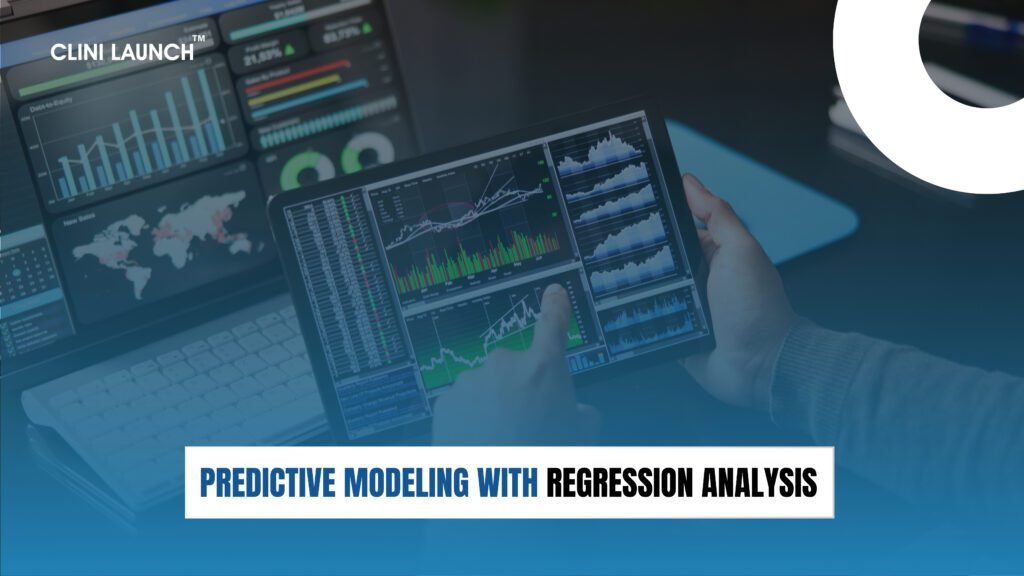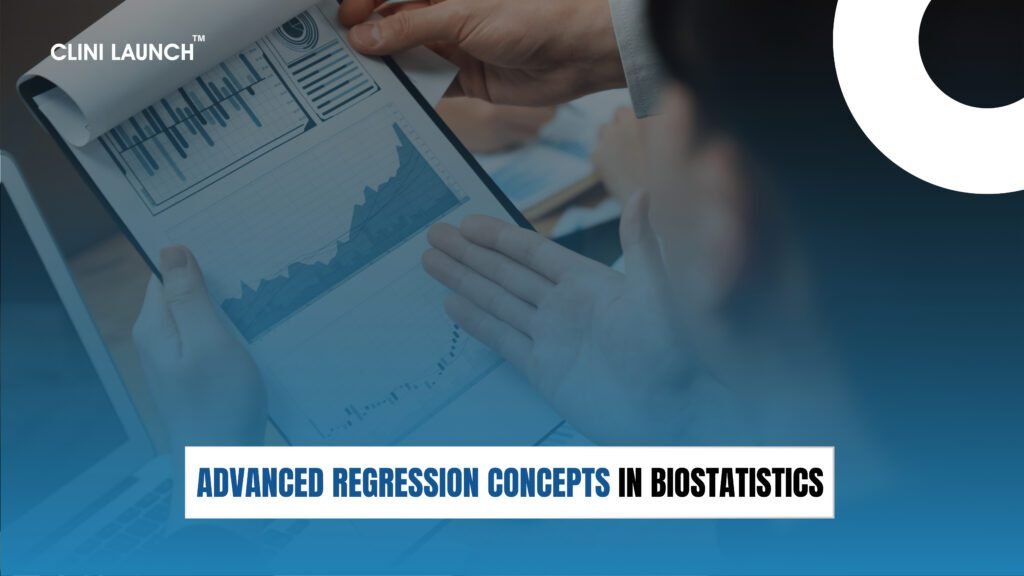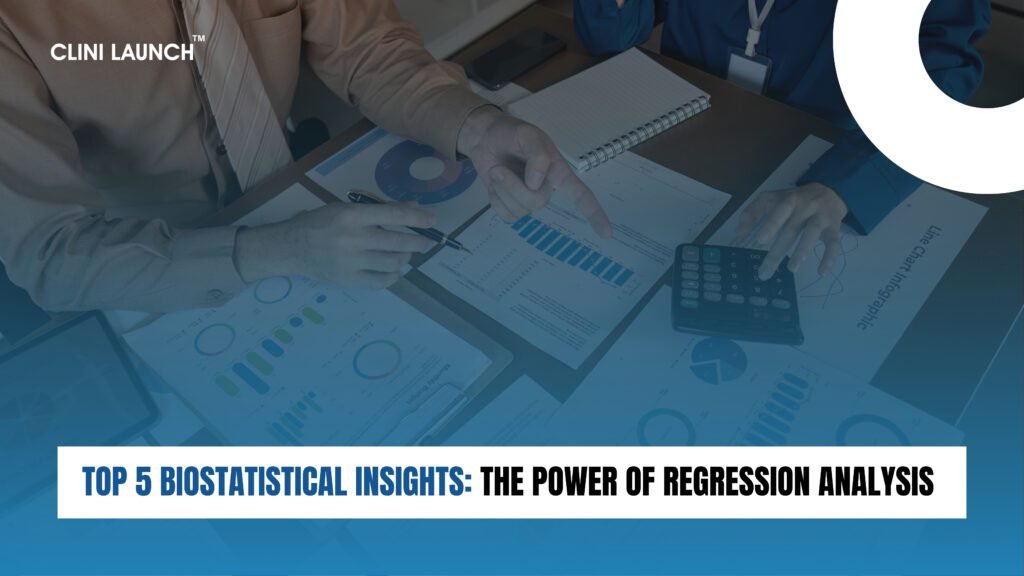The ability to discern meaningful relationships in this growing landscape of clinical research and public health within vast datasets is paramount. Biostatistics, as a discipline, provides the quantitative framework for making sense of biological and health-related data. Within this framework, Regression Analysis stands out as an exceptionally powerful and versatile statistical tool. It allows researchers to model and investigate the relationship between a dependent variable and one or more independent variables, offering invaluable insights into disease progression, treatment efficacy, risk factors, and much more.
This comprehensive guide will delve deep into the nuances of regression analysis within the context of biostatistics. We will explore its fundamental principles, examine its various forms, discuss the critical assumptions that underpin its valid application, and highlight its immense utility in Predictive Modeling. By the end of this exploration, you will have a robust understanding of why regression analysis is not just a statistical technique, but a cornerstone of evidence-based medicine and research.
Enroll Now: Biostatistics Course
What is a Regression Analysis?
Regression Analysis is a statistical method used to estimate the relationships between a dependent (or outcome) variable and one or more independent (or predictor) variables. The primary objective is to understand how the typical value of the dependent variable changes when any one of the independent variables is varied, while the other independent variables are held fixed. In biostatistics, this often translates to understanding how a health outcome (e.g., blood pressure, disease incidence, survival time) is influenced by factors like age, gender, dosage of a drug, lifestyle choices, or genetic markers.
Imagine a scenario where we want to understand the relationship between a patient’s age and their systolic blood pressure. We could collect data from many patients, plotting age against blood pressure. Regression analysis would then help us draw a “best-fit” line or curve through these data points, allowing us to estimate the blood pressure for a given age and quantify the strength and direction of this relationship.
The mathematical backbone of regression involves fitting a model to the observed data. This model, often represented by an equation, allows for prediction and inference. The “strength” of the relationship is often quantified by statistical measures like R-squared, which indicates the proportion of the variance in the dependent variable that can be explained by the independent variables.
Key Types of Regression Analysis

While the overarching goal of regression remains consistent, its specific application varies depending on the nature of the dependent variable. Two of the most commonly employed forms in biostatistics are Linear Regression and Logistic Regression.
1. Linear Regression
Linear Regression is the quintessential technique, employed when the dependent variable is continuous (e.g., blood pressure, weight, cholesterol levels, drug concentration). It seeks to model the relationship between the dependent variable and the independent variables as a straight line.
The fundamental equation for simple linear (one independent variable) is:
Y=β0 +β1 X+ϵ
Where:
- Y” is the dependent variable.
- X is the independent variable.
- β0 is the y-intercept (the value of Y when X is 0).
- β1 is the slope of the line (the change in Y for a one-unit change in X).
- ϵ is the error term, representing the irreducible random error in the relationship.
In biostatistics, Linear Regression finds extensive use. For instance:
- Predicting drug dosage response: How does increasing the dosage of a drug affect a continuous outcome like tumor size reduction?
- Modeling growth curves: How does a child’s height change with age?
- Assessing the impact of environmental factors: How does exposure to a certain pollutant correlate with a continuous biomarker level?
- Analyzing treatment effects on physiological parameters: How does a new therapy impact blood glucose levels in diabetic patients?
Multiple linear extends this concept to incorporate multiple independent variables, allowing for a more comprehensive understanding of complex relationships. For example, predicting blood pressure based on age, weight, and diet is important.
2. Logistic Regression
Unlike Linear, Logistic Regression is specifically designed for situations where the dependent variable is dichotomous or binary (i.e., it can only take on two possible values, typically 0 or 1). Common examples in biostatistics include:
- Disease presence/absence: Does a patient have a specific disease (Yes/No)?
- Treatment success/failure: Was the treatment effective (Success/Failure)?
- Survival status: Did the patient survive for a certain period (Survived/Died)?
- Risk factor presence: Is a particular risk factor present (Yes/No)?
Instead of directly predicting the binary outcome, Logistic Regression models the probability of the outcome occurring. It uses a logistic function (or sigmoid function) to transform the linear combination of independent variables into a probability between 0 and 1.
The output of a logistic regression model is typically an odds ratio, which quantifies the association between an independent variable and the odds of the outcome occurring. An odds ratio greater than 1 indicates an increased odd of the outcome, while an odds ratio less than 1 indicates decreased odds.
Logistic Regression is a cornerstone for:
- Identifying risk factors for diseases: What are the key predictors for developing Type 2 Diabetes?
- Predicting treatment response in clinical trials: Which patient characteristics are associated with a higher probability of responding to a new drug?
- Developing diagnostic models: Based on a set of symptoms and lab results, what is the probability of a patient having a specific condition?
- Assessing the impact of public health interventions: Does a vaccination program reduce the odds of contracting a particular infection?
Predictive Modeling with Regression Analysis

One of the most compelling applications of Regression Analysis in biostatistics is its role in Predictive Modeling. Once a robust regression model is developed and validated, it can be used to predict future outcomes or to estimate outcomes for new data points.
In clinical research, Predictive Modeling using regression allows researchers and clinicians to:
- Forecast disease progression: Based on initial patient characteristics and disease markers, predict the likelihood of disease worsening over time.
- Estimate treatment efficacy for individual patients: Tailor treatment plans based on a patient’s unique profile and the predicted response to different therapies.
- Identify high-risk populations: Pinpoint individuals who are most likely to develop a certain condition, enabling targeted interventions and preventative measures.
- Optimize resource allocation in healthcare: Predict hospital bed occupancy, demand for specific medical services, or the spread of an epidemic.
- Develop risk scores and indices: Create tools that quantify an individual’s risk of experiencing a particular health event, aiding in clinical decision-making.
The accuracy of Predictive Modeling hinges on the quality of the data, the appropriateness of the chosen regression model, and the careful consideration of its underlying assumptions. While regression can provide powerful predictions, it’s crucial to remember that these are statistical estimates and not deterministic certainties.
Assumptions of Regression
The validity and reliability of the inferences drawn from Regression Analysis are heavily dependent on the satisfaction of certain statistical assumptions. Violations of these Assumptions of Regression can lead to biased estimates, incorrect standard errors, and ultimately, erroneous conclusions. Therefore, a thorough understanding and checking of these assumptions are critical steps in any regression analysis.
While the specific assumptions can vary slightly depending on the type of regression (e.g., linear vs. logistic), here are the most common and crucial ones for Linear Regression:
- Linearity: The relationship between the independent variables and the dependent variable is linear. This means that the change in the dependent variable for a unit change in the independent variable is constant. For example, if we increase drug dosage by 10mg, we expect a consistent change in blood pressure across the range of dosages. Non-linear relationships would require transformations or non-linear regression models.
- Independence of Errors: The residuals (the differences between the observed and predicted values) are independent of each other. This means that the error for one observation does not influence the error for another. This assumption is often violated in time-series data (where observations are correlated over time) or clustered data (e.g., patients within the same hospital).
- Homoscedasticity (Constant Variance of Errors): The variance of the residuals is constant across all levels of the independent variables. In simpler terms, the spread of the residuals should be roughly the same across the entire range of predicted values. Heteroscedasticity (unequal variance) can lead to inefficient parameter estimates and unreliable hypothesis tests.
- Normality of Errors: The residuals are normally distributed. While this assumption is less critical for large sample sizes due to the Central Limit Theorem, it is important for the validity of hypothesis tests and confidence intervals, especially in smaller datasets. Departures from normality can sometimes be addressed through transformations or non-parametric methods.
- No Multicollinearity (for Multiple Regression): When dealing with multiple independent variables, there should be no high correlation between them. Multicollinearity inflates the standard errors of the regression coefficients, making it difficult to determine the individual contribution of each independent variable and leading to unstable estimates.
For Logistic Regression, while some assumptions differ due to the nature of the binary outcome, key considerations include:
- Linearity of the log-odds: The relationship between the independent variables and the log-odds of the dependent variable is linear.
- Independence of observations: Like linear regression, observations should be independent.
- Large sample size: Logistic regression typically requires larger sample sizes than linear regression.
Tools like residual plots, statistical tests (e.g., Durbin-Watson for independence, Breusch-Pagan for homoscedasticity, VIF for multicollinearity), and normality tests are used to assess these assumptions. When violations are detected, appropriate remedial measures, such as data transformations, robust standard errors, or alternative regression models, may be necessary to ensure the validity of the analysis.
Steps in Performing Regression Analysis
Conducting a robust Regression Analysis in biostatistics involves several key steps:
- Define the Research Question and Variables: Clearly articulate what you want to understand or predict. Identify your dependent and independent variables. For example, “Does smoking status (independent) predict the likelihood of developing lung cancer (dependent)?”
- Data Collection and Preparation: Gather relevant data. This involves careful data cleaning, handling missing values, and potentially transforming variables to meet regression assumptions (e.g., log transformation for skewed data).
- Exploratory Data Analysis (EDA): Visualize your data using scatter plots, histograms, box plots, and calculate descriptive statistics. This step helps in understanding the distributions of your variables, identifying outliers, and getting initial insights into relationships.
- Model Selection: Choose the appropriate regression model based on the nature of your dependent variable (e.g., Linear Regression for continuous, Logistic Regression for binary). Consider the number and types of independent variables.
- Model Building: Fit the regression model to your data. This involves estimating the regression coefficients. Statistical software packages (e.g., R, Python, SPSS, SAS) automate this process.
- Assumption Checking: Critically assess the Assumptions of Regression using diagnostic plots and statistical tests. Address any violations discovered.
- Interpret the estimated coefficients: Understand their magnitude, direction, and statistical significance. For example, in linear regression, interpret the slope as the average change in the dependent variable for a unit change in the independent variable. In logistic regression, interpret odds ratios.
- Model Evaluation and Validation: Assess the model’s goodness-of-fit and predictive performance.
- Goodness-of-fit: How well does the model explain the variation in the dependent variable (e.g., R-squared for linear regression, pseudo-R-squared for logistic regression)?
- Predictive performance: How accurately does the model predict new, unseen data? This often involves splitting the data into training and testing sets or using cross-validation techniques.
- Reporting and Communication: Clearly present your findings, including the model equation, coefficients, p-values, confidence intervals, and measures of fitness. Discuss the implications of your findings in the context of your research question.
Advanced Regression Concepts in Biostatistics

While Linear Regression and Logistic Regression form the bedrock, biostatistics often leverages more specialized regression techniques to address complex data structures and research questions:
- Survival Analysis (Cox Regression): Used when the outcome variable is time until an event occurs (e.g., time to disease recurrence, time to death). Cox proportional hazards regression is a prominent method in this area.
- Poisson Regression: Applied when the dependent variable is a count (e.g., number of disease episodes, number of hospital visits).
- Multilevel/Mixed-Effects Regression: Accounts for hierarchical or clustered data structures (e.g., patients nested within hospitals, repeated measurements on the same individual). This is crucial for avoiding biased estimates when observations are not independent.
- Generalized Linear Models (GLMs): A broader class of models that includes linear, logistic, and Poisson regression as special cases, allowing for various types of dependent variables and error distributions.
- Non-linear Regression: Used when the relationship between variables is inherently non-linear and cannot be adequately captured by transformations in a linear model.
The choice of advanced regression technique depends heavily on the specific research question, the nature of the data, and the underlying data generating process.
The Future of Biostatistics: Harnessing Regression for Data-Driven Discoveries
As healthcare data continues to grow in volume and complexity, the importance of robust statistical methods like Regression Analysis will only intensify. From personalized medicine and genomics to public health surveillance and clinical trial design, regression analysis provides the quantitative rigor necessary to extract actionable insights.
The ability to accurately predict outcomes, identify influential risk factors, and understand complex biological relationships empowers researchers, clinicians, and policymakers to make more informed decisions, leading to improved patient care and more effective public health strategies. The advancements in computational power and statistical software are making these sophisticated analyses more accessible, fostering a new era of data-driven discoveries in biostatistics.
Understanding and effectively applying Regression Analysis is a critical skill in modern biostatistics. Whether you are conducting a clinical trial, analyzing epidemiological data, or building Predictive Modeling tools, a solid grasp of these techniques is indispensable.
At CliniLaunch, we specialize in providing comprehensive biostatistical support and research solutions. Our team of experienced biostatisticians can guide you through every stage of your research, from study design and data analysis to interpretation and reporting. We can help you navigate the complexities of Linear Regression, Logistic Regression, ensure adherence to the crucial Assumptions of Regression, and leverage Predictive Modeling to unlock the full potential of your data.
Ready to elevate your clinical research with expert biostatistical analysis? Visit CliniLaunch to learn more about our services and how we can help you achieve your research goals.
References
Regression Analysis
https://corporatefinanceinstitute.com/resources/data-science/regression-analysis
Regression: Definition, Analysis, Calculation, and Example
https://www.investopedia.com/terms/r/regression.asp
What is Regression Analysis and Why Should I Use It?





